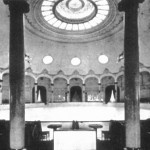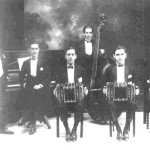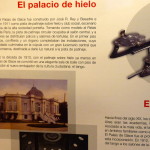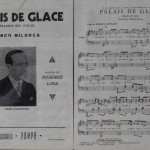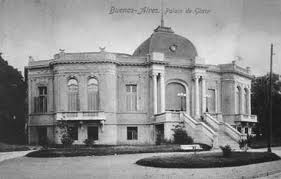
This afternoon the skies turned prematurely dark and threatened my leisurely reading of “Mitomanías Argentinas.” Where to find shelter? I make it (running) to the Palais de Glace moments before furious summer rain drove people indoors.
Currently a museum, I wander around the Bell-Époque building. I take a visual historic tour looking at early photos and pamphlets displayed in glass cabinets. Inspired by the Palais des Glaces in Paris, this was an exclusive social club for the upper class.
New discovery today: both this Palais and its Parisian counterpart featured a circular ice-skating rink on the ground floor later replaced by a wood floor. The wood floor built for tango dancing is gone today. In 1912 a certain Baron de Marchi sponsored a ball featuring a tango contest on the former luscious floor – event frequently mentioned in tango history books as the first “evidence” of the acceptance of tango by the upper classes. What a myth: we have documentation tango had been accepted by the upper class around the early 1900s.
An excerpt follows from “In Strangers’ Arms: The magic of the Tango.”
“What about Argentines rejecting the dance before its acceptance in Paris? The wide appeal of the tango among the popular masses is documented as early as 1900 in El Tiempo and 1901 in El Diario… Newspaper articles of 1904, 1906, and 1910 continued to report events at elegant theatres in the center of the city. There were dances at Teatro Ópera, an aristocratic venue; tickets for the evening were the most expensive in the city. A 1910 article in La Nación firmly places the dance among the upper class…”
(Copyright (c) 2013 Beatriz Dujovne)
Tags: Places

